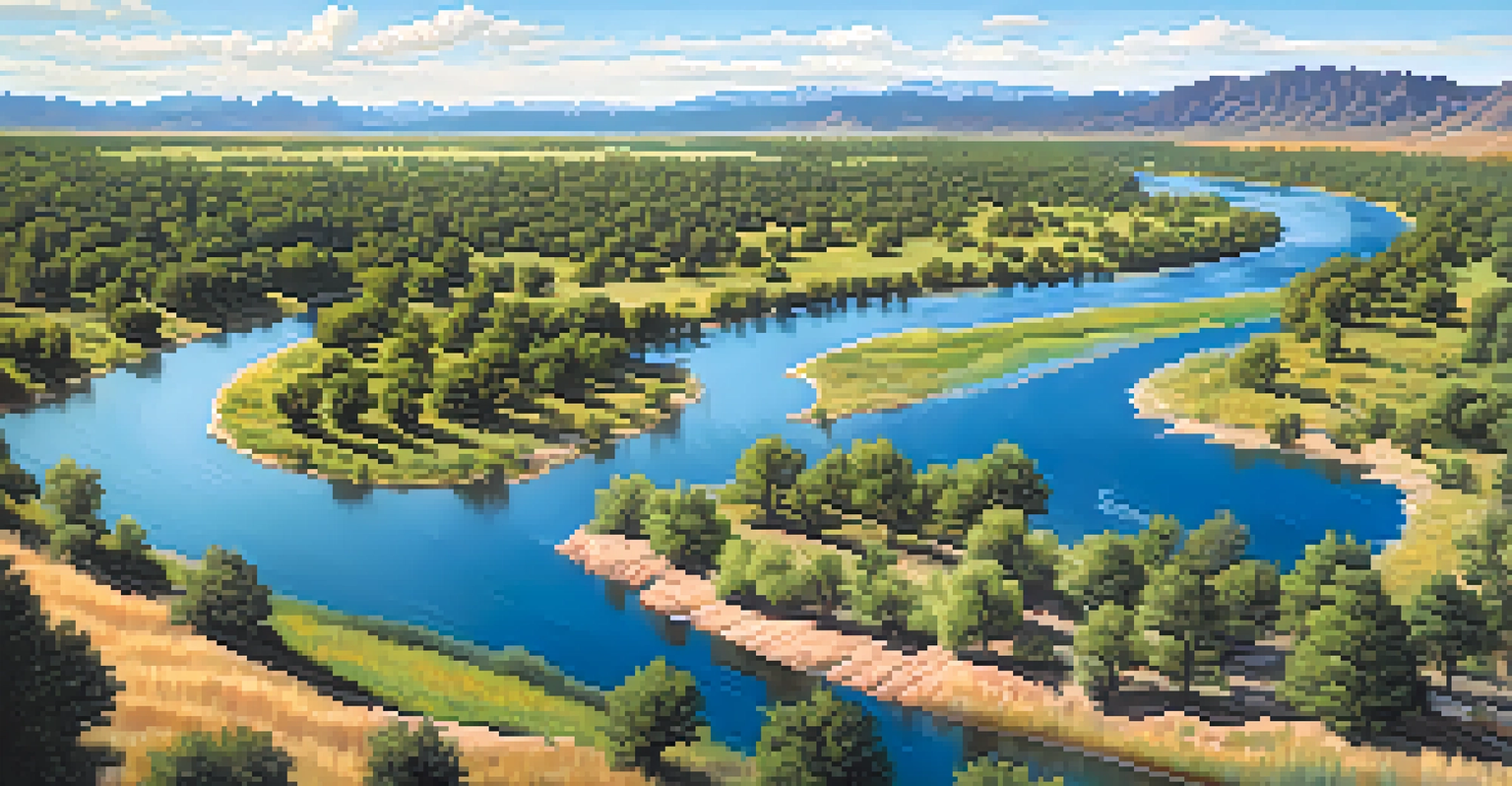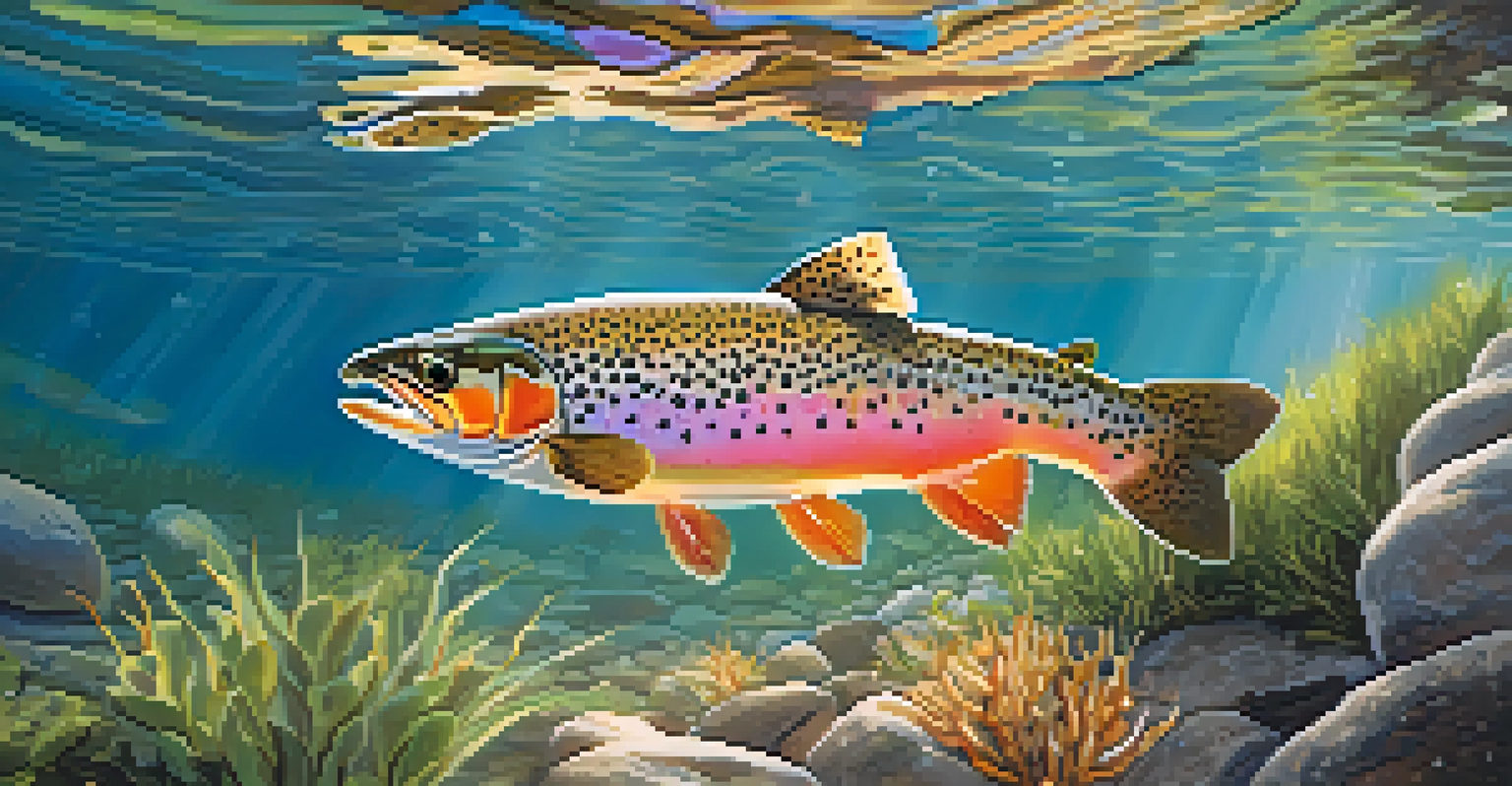How Habitat Restoration Helps Colorado's Wildlife Thrive

Understanding Habitat Restoration and Its Importance
Habitat restoration is the process of returning ecosystems to their original state. This practice is essential for wildlife as it provides the natural environment they need to thrive. By rehabilitating areas that have been damaged or altered, we can help sustain biodiversity and promote healthy animal populations.
The future will either be green or not at all.
In Colorado, diverse wildlife such as elk, bears, and various bird species depend on specific habitats to survive and reproduce. When these habitats are degraded by human activities or natural disasters, the balance of these ecosystems is disrupted. Restoration efforts aim to mend these broken ecosystems, ensuring that wildlife can access food, shelter, and breeding grounds.
Moreover, habitat restoration is not just about the animals; it also benefits local communities and ecosystems. Healthy habitats contribute to cleaner air and water, promote tourism, and enhance recreational opportunities, making it a win-win for both wildlife and people.
Key Techniques Used in Habitat Restoration
Several techniques are employed in habitat restoration to ensure the success of the project. These include removing invasive species that threaten native flora and fauna, replanting native vegetation, and restoring natural water flow in ecosystems. Each technique plays a vital role in reviving the health of an area.

For instance, when invasive plants are removed, native species have a better chance to flourish. This not only supports the food chain but also creates a more resilient habitat. Additionally, replanting native plants brings back the natural balance and attracts local wildlife, which is crucial for ecosystem restoration.
Habitat Restoration Supports Wildlife
Restoring damaged ecosystems is vital for sustaining biodiversity and providing wildlife with necessary resources.
Another important method is the restoration of wetlands. These areas are essential for many species, acting as nurseries for fish and providing habitat for birds. By restoring these vital ecosystems, we can significantly enhance biodiversity and ensure a thriving environment for various wildlife.
The Role of Community in Habitat Restoration
Community involvement is a cornerstone of successful habitat restoration projects. Local volunteers often participate in activities like planting trees, removing trash, and monitoring wildlife populations. This hands-on approach fosters a sense of stewardship and connection to the environment.
What we are doing to the forests of the world is but a mirror reflection of what we are doing to ourselves and to one another.
Moreover, community members often have invaluable knowledge about the local ecosystem, which can guide restoration efforts. Their insights can help identify areas that need focus and the best species for replanting. This collaborative spirit not only enhances restoration outcomes but also builds stronger community ties.
Engaging the community also raises awareness about the importance of preserving wildlife habitats. When people see the positive impact of their efforts, they are more likely to continue supporting conservation initiatives, creating a cycle of care and commitment to the environment.
The Impact of Climate Change on Wildlife Habitats
Climate change is a significant threat to wildlife habitats across Colorado. Rising temperatures, altered precipitation patterns, and increased frequency of extreme weather events can drastically affect local ecosystems. These changes can lead to habitat loss and fragmentation, which are detrimental to wildlife.
For example, species that rely on specific temperature ranges for breeding or foraging may find themselves struggling to adapt. As habitats shift, some animals may be forced to migrate, leading to conflicts with humans or other species. Restoration efforts can help mitigate these impacts by creating more resilient ecosystems that can better withstand climate fluctuations.
Community Involvement is Key
Engaging local communities in habitat restoration efforts enhances outcomes and fosters a sense of stewardship.
By focusing on habitat restoration, we not only address existing environmental issues but also prepare ecosystems for future challenges. This proactive approach ensures that wildlife has a fighting chance in a rapidly changing world, ultimately fostering greater biodiversity and ecosystem health.
Success Stories of Habitat Restoration in Colorado
Colorado is home to numerous successful habitat restoration projects that highlight the positive impact these efforts can have. One notable example is the restoration of the South Platte River, which has seen improved water quality and increased wildlife populations as a result of targeted restoration efforts. The project involved removing invasive plants and replanting native species along the riverbank.
Another inspiring case is the recovery of the Colorado River cutthroat trout, which has benefited from habitat restoration initiatives in the state. By restoring stream habitats and ensuring clean water, this native fish species is now thriving, demonstrating how focused efforts can lead to significant wildlife recovery.
These success stories serve as a reminder of the power of habitat restoration. They not only illustrate the potential for ecological healing but also inspire further action and investment in conservation efforts across Colorado.
Challenges Facing Habitat Restoration Efforts
Despite the progress made in habitat restoration, several challenges persist. Funding is often a major issue, as many projects rely on grants and donations to operate. Competing priorities for financial resources can limit the scope and number of restoration initiatives, leaving critical habitats at risk.
Additionally, the complexity of ecosystems means that restoration is not always straightforward. Each project requires careful planning and ongoing monitoring to ensure that the desired outcomes are achieved. Factors such as changing climate conditions and human encroachment can further complicate efforts, making it vital for restoration teams to remain adaptable.
Climate Change Threatens Ecosystems
Climate change poses significant challenges to wildlife habitats, making proactive restoration essential for resilience.
Finally, public perception and awareness can also pose challenges. Some individuals may not fully understand the importance of habitat restoration or may be resistant to changes in land use. Education and community engagement are essential to overcoming these hurdles and fostering broader support for conservation initiatives.
The Future of Wildlife Habitat Restoration in Colorado
Looking ahead, the future of wildlife habitat restoration in Colorado appears promising, provided we continue to prioritize these efforts. With growing awareness about environmental issues, more individuals and organizations are stepping up to support habitat restoration projects. This collective action can lead to a brighter future for Colorado's diverse wildlife.
Innovative approaches, such as using technology for monitoring and planning, can enhance the effectiveness of restoration initiatives. For example, drones can help survey large areas and gather data that informs restoration strategies. These advancements can streamline processes and improve outcomes for wildlife.

Ultimately, the continued commitment to habitat restoration will be crucial for ensuring that Colorado's ecosystems thrive. By embracing this cause, we not only protect wildlife but also enhance the quality of life for all who call this beautiful state home.